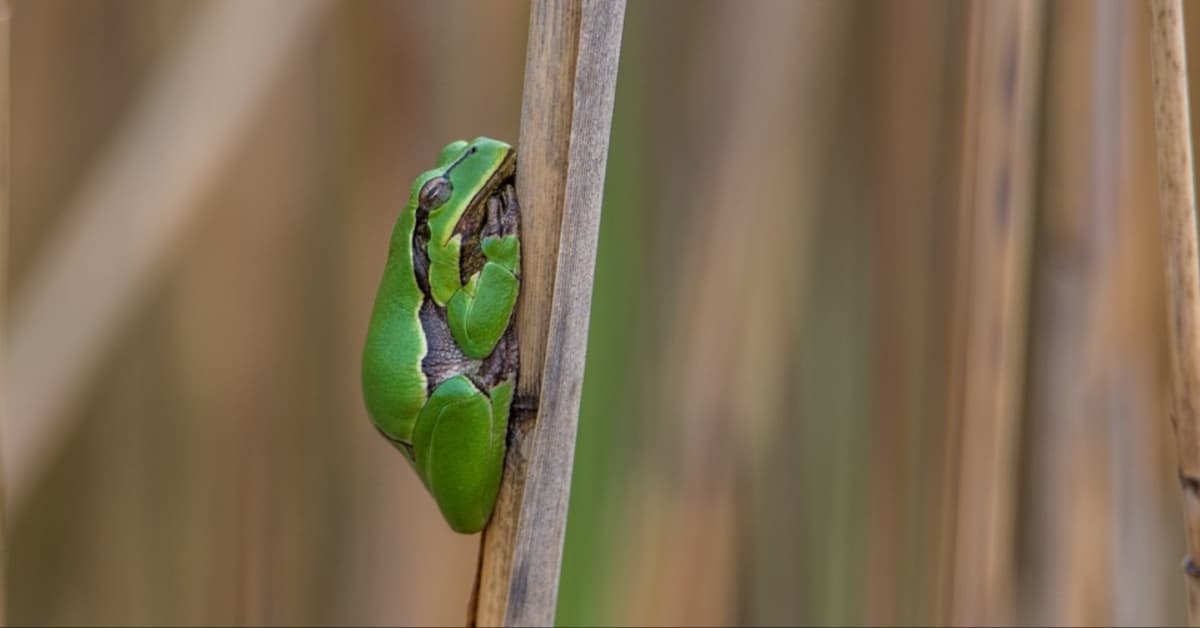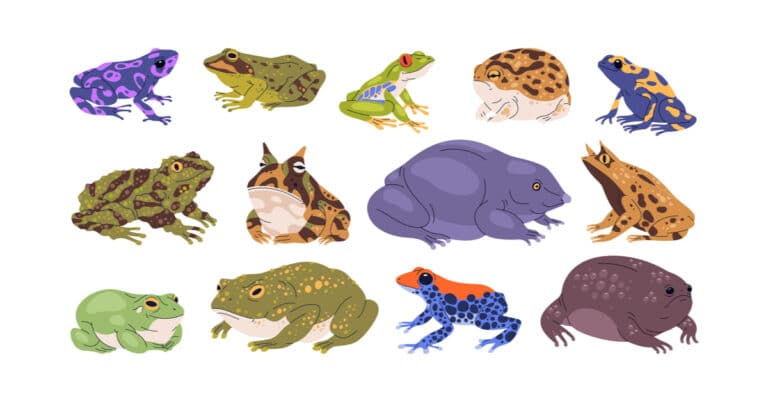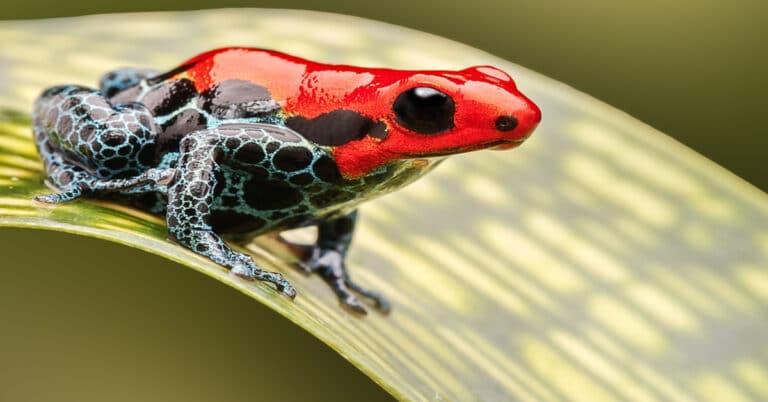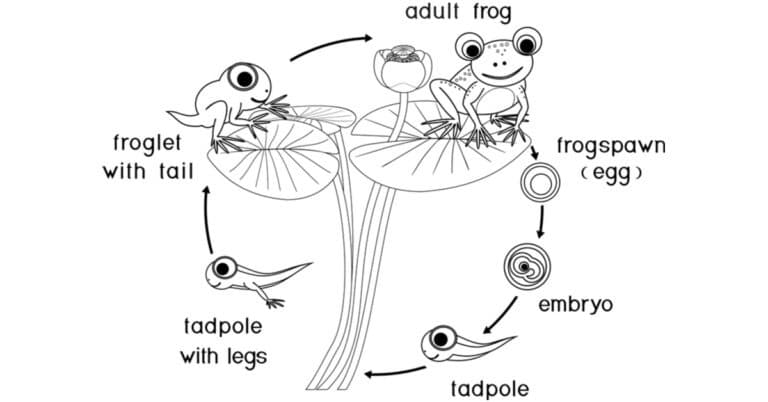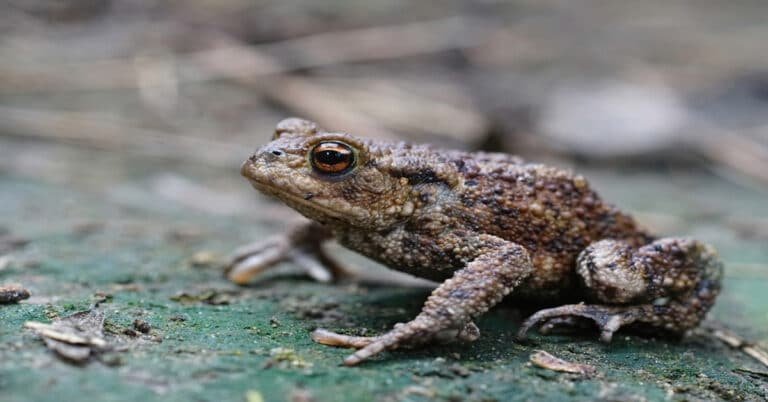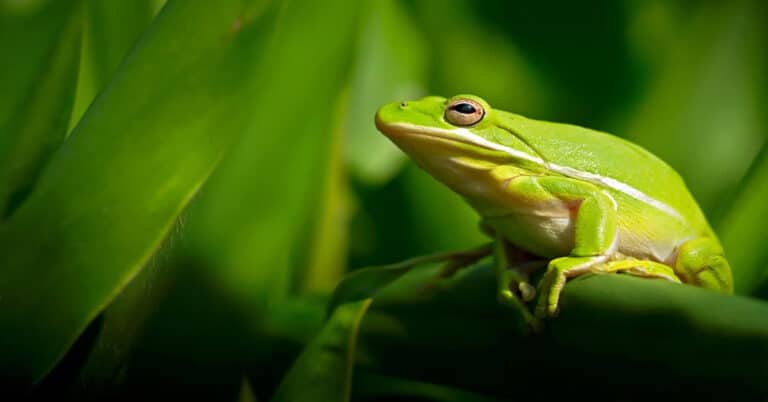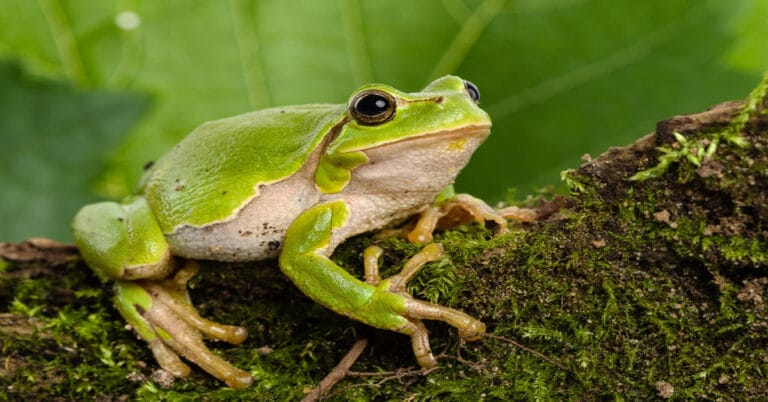Types of Florida Tree Frogs
Roughly 400 million years ago the first four-legged fish swam out of the ocean and walked onto land, breathing oxygen from our atmosphere for the very first time. These became the ancestors of all land-dwelling animals today, including us humans, and Florida tree frogs, which we’ll be learning about in todays piece.
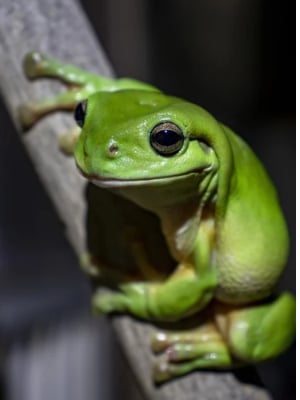
The most commonly known amphibians on the planet, to most people, are frogs.
The oldest frog fossil ever discovered dated back 250 million years ago to the late Permian period. This frog was given the name of Triadobatrachus by scientists. Unlike frogs of today, Triadobatrachus had a tail, and it couldn’t use its hind legs to jump like modern frogs.
Unfortunately for us, it’s difficult to tell exactly where frogs went from here; when they evolved into what they are today, and when they separated from toads. All we know is that they did.
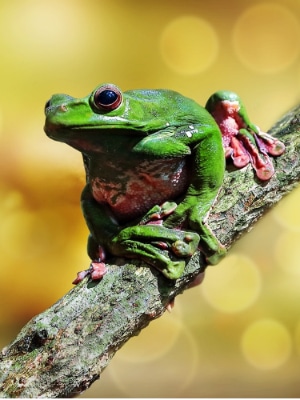
Frogs have evolved into over 6,000 species and subspecies that exist in the world today. There are over 300 species of toads, and over 800 species of tree frogs, some of which we’ll be learning about in this piece today.
Of these 800-plus types of tree frogs, 30 of them reside in the United States, seven of which currently inhabit Florida.
As the title suggests, that’s what we’ll be discussing today:
7 Types of Florida tree frogs
Before we get into todays list, it’s important to know that in nearly every species of frog in the world, females are larger than males. As such, that is the case for all seven Florida tree frogs on this list.
This is due to the fact that females need extra girth to carry young, and this has become a very common evolutionary trait for animals that lay eggs.
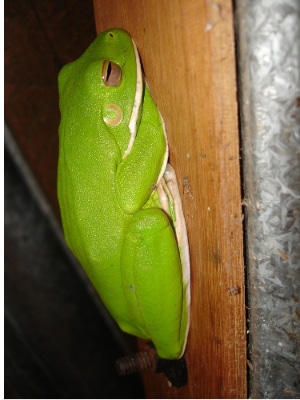
Being amphibians, frogs are cold-blooded, meaning they do not possess the ability to make their bodies warm on their own, and they absorb everything around them through their skin including oxygen, water, and toxins.
It also means they need moisture in order to breathe, as they cannot when their skin dries out.
Frogs are carnivores as adults, with meat making up the entirety of their diet.
The same cannot be said for their young, however, as tadpoles feed on decaying plant matter in order to grow into little froglets. They feed on a wide variety of insects including, but not limited to spiders and flies of all kinds, mites, ants, roaches, crickets and grasshoppers, katydids, locusts, cicadas, snails, slugs, worms, and even themselves.
All frogs, including Florida tree frogs, are incredibly territorial creatures that will kill and eat one another at times, and some can even eat small vertebrate pray such as mice.
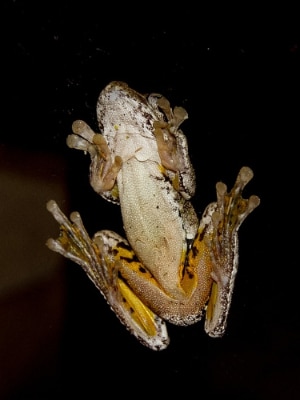
One way tree frogs differ from other frogs is their feet:
Frogs that live on land tend to have shorter legs designed for walking and climbing slanted, but not vertical surfaces, and they also often times have webbed feet for swimming, whereas tree frogs have round toe pads that act as suction cups to aid them in sticking to vertical structures such as trees and walls, as well as wet leaves and smooth surfaces such as glass.
So, when you see Florida tree frogs holding onto a vertical surface, that is how they do it.
Now that you’ve gotten a small background on these amazing creatures, let’s take a look at the seven types of Florida tree frogs:
1. Green Tree Frog (Dryophytes Cinereus)
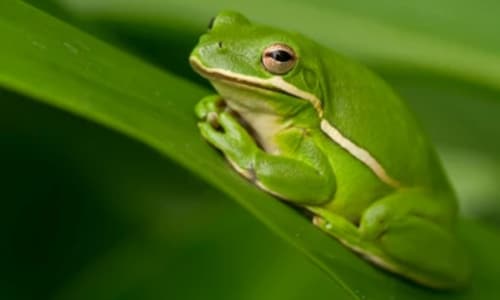
- Size: 1.25-to-2.25 inches (31mm-to-57mm)
- Lifespan: Up to six years
Green tree frogs are one of the most commonly seen species in southern Florida, where they inhabit trees and shrubs of Big Cypress, a national preserve of the area. They will lay their eggs in shallow swamps, ponds, and marshes of these areas, laying approximately 400 eggs at a time, whereas their Australian counterparts, Australian green tree frogs, lay 150-to-300 in a clutch.
You’ll see as you continue reading, Florida tree frogs are no stranger to laying giant egg clutches.
2. Cope’s Gray Tree Frog (Hyla Chrysoscelis)
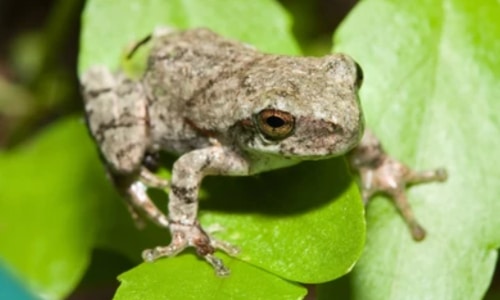
- Size: 1.3-to-2 inches (33mm-to-51mm – record 2.4 inches)
- Lifespan: 7-to-9 years
Also known as the southern gray tree frog, Cope’s gray’s are Florida tree frogs that can be found in northern Florida, as well as other states such as Georgia, Louisiana, and South Carolina.
It can be difficult telling the Cope’s gray tree frog apart from the common gray tree frog, the only difference between the two being their mating calls.
This species of Florida tree frog can lay upwards of 2,000 eggs at a time, laying them in groups of 10-40. The eggs will then hatch into tadpoles within four-to-five days and turn into little froglets roughly two months later.
3. Barking Tree Frog (Hyla Gratiosa)
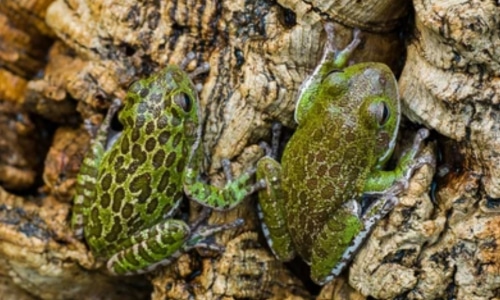
- Size: 2-to-2.75 inches (51mm-to-70mm)
- Lifespan: Up to 10-plus years
Endemic to the southeastern United States, barking tree frogs are known for their obnoxiously loud mating calls. They can be found in the swampy woods and pinelands of Florida, found throughout the majority of the state.
Barking tree frogs can lay anywhere from 1,500-to-4,000 eggs at a time.
4. Cuban Tree Frog (Osteopilus Septentrionalis)
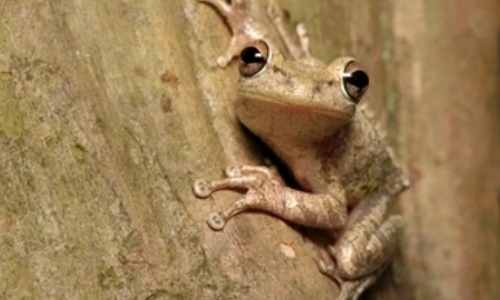
- Size: 1.5-to-5 inches (38mm-to-139mm – record 5.5 inches)
- Lifespan: 5-to-10 years
It can at times be difficult to identify Cuban tree frogs, as some are white, while others can be gray, green, or brown. These types of Florida tree frogs also have the ability to change their color, much like some chameleon species.
Some can have dark streaks or patterns across their backs, while others can have a near solid color with little to no pattern.
Originally native to Cuba, as their name suggests, Cuban tree frogs were accidentally brought to the States by humans in the 1920’s, which could be the reason for many of them looking different from one another.
They’ve possibly evolved over these last 100 years, which would make some of their appearances differ from one another.
Though they’re not originally native to the United States, Cuban tree frogs are the largest tree frogs in the country.
Cuban tree frogs are considered an invasive species, as they often times find themselves in people’s homes. They’re known to consume five other species of native frogs in Florida and Cuba, and they’re also known to eat small lizards and snakes.
This species can lay up to a whopping 3,000 eggs at a time, with their tadpole stage of life lasting between one-and-two months.
5. Pine Woods Tree Frog (Hyla Femoralis)
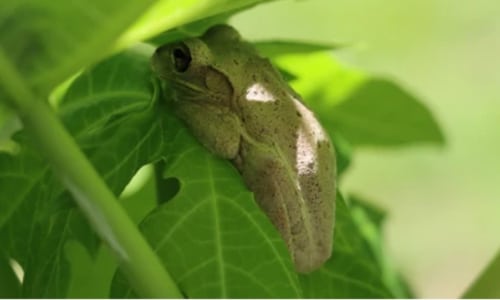
- Size: 1-to-1.5 inches (25mm-to-38mm)
- Lifespan: 3-to-5 years
Quite plentiful in their native habitat, pine woods tree frogs prefer forests where they can climb onto longleaf pine trees. They can also be found in cabbage palms, bromeliads, and pitcher plants.
Like most frogs, and like most Florida tree frogs, pine woods tree frogs lay their eggs in shallow water, laying between 100-and-250 at a time.
6. Squirrel Tree Frog (Hyla Squirella)
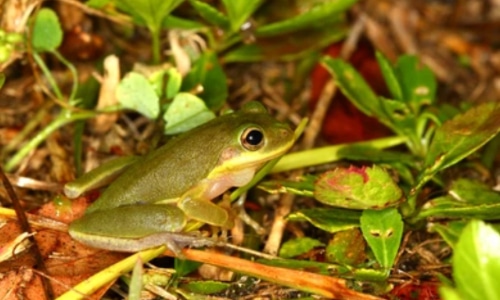
- Size: 1-to-1.6 inches (25mm-to-40mm)
- Lifespan: 7-to-9 years
Found throughout Florida, especially abundant in the Keys, squirrel tree frogs find themselves on buildings, as well as in shrubs and on trees in both urban and natural areas.
They are one of the most common types of Florida tree frogs, and their range stretches as far north as southeastern Virginia, and as far west as eastern Texas.
Squirrel tree frogs lay up to 1,000 eggs at a time, with their tadpole stage lasting about 45 days until they transform into baby frogs. They are a nocturnal species, though they can be found foraging for insects during the day if it’s raining.
7. Spring Peeper Tree Frog (Pseudacris Crucifer)
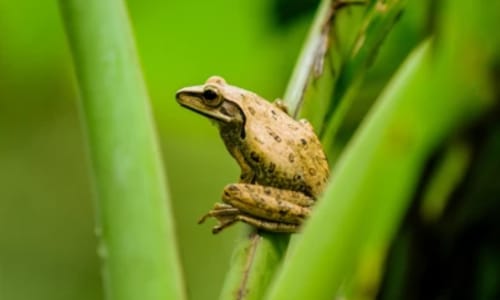
- Size: .75-to-1.5 inches (average of 1 inch)
- Lifespan: 3-to-4 years
The last type of Florida tree frog currently residing in the state is the spring peeper.
Though they can inhabit trees, spring peeper tree frogs can also be found in shallow, often times temporary bodies of water, or flooded areas, as well as in wooded areas, in or near ponds and swamps.
As a nocturnal species, spring peeper tree frogs hibernate during the day under logs and sometimes under the loosened bark of trees.
Female spring peepers can lay anywhere from 750-to-1,200 eggs in a clutch, where males will fertilize them once they’re laid asexually. Depending on the temperature of their environment, the eggs will hatch in as little as two days, or as long as two weeks after they’re laid.
If you enjoyed this piece, feel free to share it on social media!
And, if you enjoyed this piece, perhaps you’ll like this one we did on the Top 15 Most Beautiful Tree Frogs in the World, or this one on the Difference Between Frogs and Toads.

I started writing in the fourth quarter of 2018. I wrote solely about MMA and boxing up until October of 2022, where I began writing about animals; primarily dangerous, venomous species. They’ve always fascinated me. Considering, my goal is to make a living by teaching people about these wonderful creatures. You can check out my Facebook page, where every article I’ve ever written currently sits, or you can check out my Twitter page, where I’ve shared all of my animal pieces to date.

